- The wars that ended with Waterloo were known as “ The Great War” until 1917
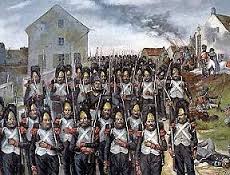 The battles fought in Belgium, during the Waterloo Campaign, over those few brief days in June 1815 brought an end to 22 years of almost continuous fighting between the European powers in what had been, effectively, the first “world war” – and historians estimate that as many as 7,000,000 military and civilian casualties occurred between 1804 and 1815 alone. Until 1917, this was known as “The Great War.” Those battles also brought an end to that military rivalry between Britain and France, which had flared so violently and plagued each of the six centuries since the Anglo-French War of 1202-14. From now on, and despite a few ups and downs, France would be our ally in several subsequent conflicts – the beginning of a new and more modern Europe in which Germany and Italy would be born, and the seeds of social democratic government would slowly begin to replace the despotism of the old Royal Houses. It’s a process that’s still evolving, of course.
The battles fought in Belgium, during the Waterloo Campaign, over those few brief days in June 1815 brought an end to 22 years of almost continuous fighting between the European powers in what had been, effectively, the first “world war” – and historians estimate that as many as 7,000,000 military and civilian casualties occurred between 1804 and 1815 alone. Until 1917, this was known as “The Great War.” Those battles also brought an end to that military rivalry between Britain and France, which had flared so violently and plagued each of the six centuries since the Anglo-French War of 1202-14. From now on, and despite a few ups and downs, France would be our ally in several subsequent conflicts – the beginning of a new and more modern Europe in which Germany and Italy would be born, and the seeds of social democratic government would slowly begin to replace the despotism of the old Royal Houses. It’s a process that’s still evolving, of course.
- We’re still paying for the Battle of Waterloo
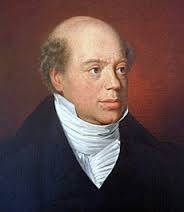
Many other things remained entirely unchanged. International banking continues to fund all sides in current conflict, exactly as they did in 1815. The arms industry is still the main beneficiary of warfare, exactly as it was in 1815. And regardless of the original spark, which may ignite the bonfires of war, it has generally been international banking and the arms industry that have fanned the flames and kept the bonfires burning. Between 1804 and 1815, British firms sold no less than 7.5 million completed guns to government, plus a further 1 million for the East India Company (Kenton White). British defense spending in 1815 alone amounted to £73 million (the equivalent of £266 billion at current values), creating huge debts owed to the bankers who had loaned the money. Astonishingly, some of the UK’s current debt dates back to war bonds originally issued in 1815 (Guardian, October 2014). And legends sprang up around many of the bankers concerned. The most enduring are those about the Rothschild family. One of those legends tells us that Nathan Rothschild not only received early news of the victory at Waterloo, but then lied about the outcome to force the price of government bonds down still further, bought all that he could and then “made a killing” when the price rose again once the actual outcome became known. But there is no documentary evidence of this whatsoever, and the legends are suspect since they have variously been used and embellished as part of several anti-Semitic “conspiracy theories” about Jewish bankers and world domination – including one perpetrated by Hitler himself. But international bankers certainly made enormous profits from the various government loans and other financial arrangements that resourced all sides in the Napoleonic Wars, or which kept France afloat in the aftermath, due to the crippling reparations she was forced to pay.
- Napoleon’s army faced impossible odds
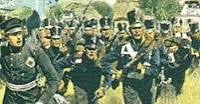
During the Waterloo Campaign, Napoleon faced two very powerful armies, not one – and each of those armies was numerically just about as strong as his own. The French Army of the North numbered around 123,000; Wellington’s Anglo-Dutch Army totaled 112,000; and Blücher’s Prussian Army fielded approximately 130,000. Bonaparte’s plan was to drive north, between his enemies, fight whichever he came across first while keeping the second pinned down, then turning against that second army once the first was defeated. For that reason, he had already fought the Prussians at Charleroi and Gilly on 15th June 1815, then the Prussians again on 16th June at Ligny while his left wing tried to pin the Anglo-Dutch at Quatre Bras, then the Anglo-Dutch rearguard at Genappe on 17th June, before finally facing Wellington at Waterloo itself on 18th June. And, even then, for half of the battle, French soldiers held off wave after wave of Prussians trying to come to Wellington’s rescue – in some of the bloodiest fighting which those taking part had ever seen. During the Battle of Waterloo itself, Napoleon’s 77,500 soldiers faced an Anglo-Dutch Army of 73,200 and 49,000 of Blücher’s Prussians.
- Wellington’s Waterloo army was more German than British
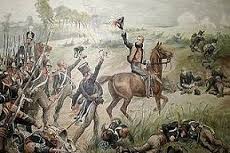
In total, over 45% of Wellington’s Anglo-Dutch army spoke German as a first language (Mark Adkin). Only 36% of the army was British; 10% were Nassauers (Rhineland); 8% Brunswickers (Lower Saxony); 17% Hanoverian (Lower Saxony); 13% Dutch; 6% Belgian; and 10% from the King’s German Legion (ex-patriate Hanoverian volunteers). It’s for this reason that historian Peter Hofschröer describes Waterloo as a “German victory” since, combined with Blücher’s troops, over three-quarters of those who fought Bonaparte on 18th June 1815 were Germans.
- The battle didn’t take place at Waterloo
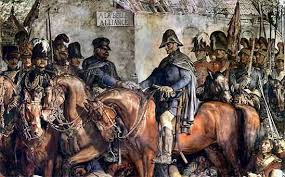
Napoleon’s downfall didn’t take place at Waterloo at all! The battle was actually fought on the ground between the village of Mont St. Jean (the name by which the French know the engagement) in the north, and the inn called La Belle Alliance (the name by which it was known to the Prussians, and is still known in Germany) in the south. But on the day after the battle, when Wellington wrote up his report, he did so at an inn in the village of Waterloo, 3 km to the north. We’ve called it the Battle of Waterloo ever since. The word “Waterloo” means “Wet Meadow” – Vaterlô in the local Walloon dialect. Ironically, Waterloo was not only saw the end of the Revolutionary-Napoleonic Wars but almost the start too. For when the French defeated Austria at the Battle of Fleurus in 1794, it was upon Waterloo that the Austrian commander, Coburg, fell back and took up his final position before finally fleeing the field.
- 2,000 amputations performed in the aftermath
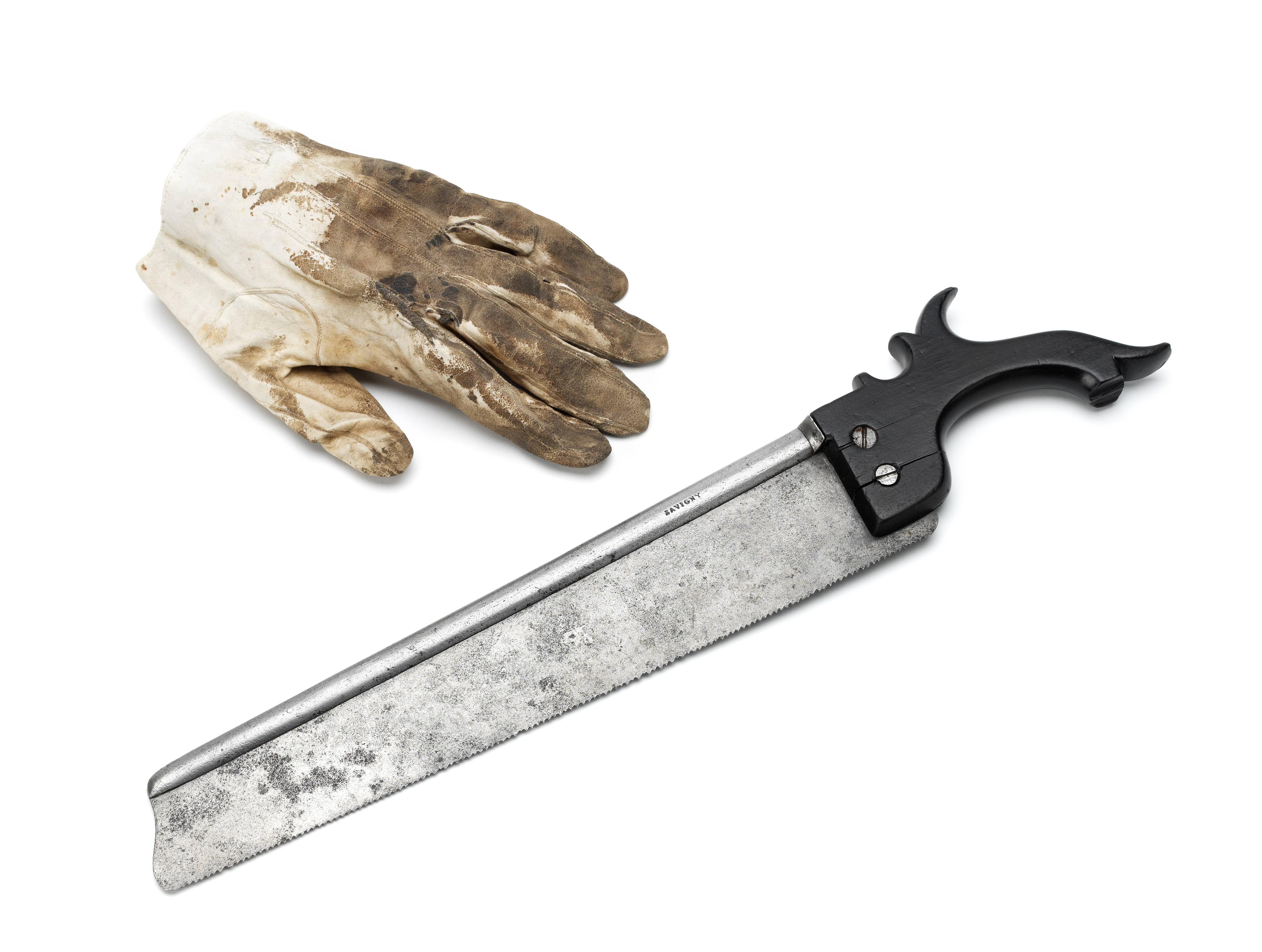
At the end of the battle, there were more than 50,000 dead or wounded. Retired surgeon and expert in Napoleonic medicine, Michael Crumplin, has shown that, among the wounded, there were more than 2,000 amputations. The procedure at that time took 15 minutes, using knives and saws, and with no meaningful anaesthetic. Perhaps the most famous amputee of the battle was Lord Uxbridge, Wellington’s cavalry commander. One of the last cannon shots fired by the French hitting his right leg, and almost severing the limb. According to anecdote, he was close to the Duke of Wellington when his leg was hit, and exclaimed, “By God, sir, I’ve lost my leg!” To which Wellington replied “By God, sir, so you have!” Uxbridge was taken to a house in Waterloo where the remains of the leg were removed. But the enterprising owner of the house, Monsieur Paris, asked whether he might bury the thing in his garden. There he erected a shrine which soon began to attract tourists, even attracting royalty, like the King of Prussia. The shrine’s still there – though not the leg itself. The bones had been exposed during a storm, sparking complaints of disrespect from Uxbridge’s descendants. So the Paris family hid them – in the study of the house. They were discovered there in 1934 and incinerated by the widow of the last M. Paris.
- Waterloo Teeth – the latest fashion
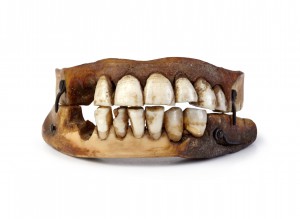
They say that, on the day after the battle, you couldn’t find a pair of pliers for love nor money. Not for fifty miles around. The new fashion – in London, Paris, Berlin, St. Petersburg and New York – was for dentures fitted with real teeth. And there, on those few square miles of Belgian soil, lay no less than 50,000 potential donors, most of them dead, the rest so close to it that it didn’t much matter. It was the Etruscans, apparently, who first invented dentures – around 700 BC. Teeth from another person or an animal, such as an ox, were inserted into a band of gold with a metal pin and fitted on to the remaining teeth. Dentures remained an option only for the wealthy as they were expensive to make. They appeared again in the 18th Century when sugar addiction had taken a dreadful toll of Europe’s teeth. Fans became popular, not to keep their owners cool, but to waft away the stench of gum disease. False teeth became popular once more. And perhaps the most famous complete set of dentures was that owned by George Washington. It’s pure myth that they were made of wood, of course. In truth, each tooth was carved from ivory, set into lead, and spring-loaded. Uncomfortable! After Waterloo, battlefield casualties became the main source of denture teeth until after the American Civil War. And, after Waterloo, a good incisor could fetch as much as two guineas – the equivalent, today, of around £300.
- The valiant dead used for fertilizer
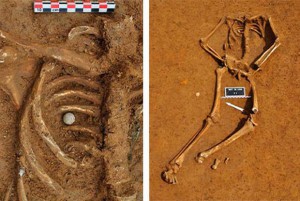
The most recently discovered casualty of the battle was found in 2012 under a car park during the reconstruction of the Waterloo visitor centre. Historian Gareth Glover has pieced together all the available clues discovered with the skeleton and believes that the soldier was Friedrich Brandt, a Hanoverian fighting with the King’s German Legion. Brandt apparently suffered from curvature of the spine but he was killed by a musket ball – still lodged in his ribs when his body was found. This is the first completely intact skeleton to be found on the site for almost 200 years. And that’s no surprise since, until about fifty years after the battle, companies considered it “fair game” to dig up battlefield dead from their mass graves and grind down their bones for sale to local farmers as fertilizer!
- Wellington really did invent the “welly”!
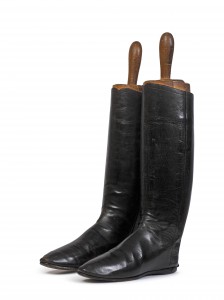
So did Wellington really invent the famous boots that now carry his name? Well, yes. Though not until after the battle. It seems that, in 1817, he instructed his shoemaker to modify the Hessian boots he’d worn at Waterloo, making them more hard-wearing yet comfortable for evening wear. They remained a popular and fashionable footwear for the next 40 years. But, in 1852, Hiram Hutchinson opened a rubber boot company using the new vulcanization process invented by Charles Goodyear. He used a similar style for these rubber boots to the one first designed by Wellington – and they’ve been “wellies” ever since. But the rank-and-file soldiers didn’t enjoy quite the same elegance. By the time the French battalions reached the Waterloo battlefield, they’d been marching for many hours through torrential rain and a quagmire of mud. Many of them had lost their boots, though they carried spares. Or rather, one spare. Left or right? In practice, it was no real problem since, until much later in the century, boots and shoes were straight-cut, no left or right, and came in only three sizes – small, medium or large.
- There were women in the battle too!
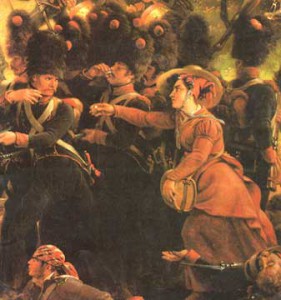
Among the many Waterloo legends, few are so striking as the tale of Charles Napier (95th Rifles) and the broken body of a beautiful female French cavalry trooper he discovered among the thickest of Bonaparte’s dead. Another woman serving with the French army, Regula Engel, survived the battle, even though she had been shot in the neck and bayoneted in her side. Her husband, however, was killed before her eyes and her 9-year old son Joseph (a drummer boy) was shot in the head. But, in truth, there were many feisty women who fought, in their own right, in their own way, in the French front lines. Each French infantry battalion had a compliment of four cantinières – female victuallers/sutlers responsible for providing private supplies to supplement soldiers’ rations – and each cavalry squadron had two such women. They were generally to be seen in the forefront of battle, serving out tots of rot-gut brandy to the troops – and frequently dying in the process. Among those who perished at Waterloo was Marie Tête-de-Bois, who fell among the ranks of Napoleon’s Old Guard during the final stages. Dozens more were wounded or taken prisoner. Their bravery is typified by the story of Madeleine Kintelberger, who served with Bonaparte’s 7th Hussars during the Austerlitz campaign and was caught up in fighting against the Russian Cossacks while protecting her children who were also with her on the battlefield. Her husband had been killed by cannon fire and Madeleine held off the Cossacks with a sword she had picked up, losing her own right arm in the process, being slashed and speared by lances on several occasions, and being shot in each leg. She was pregnant with twins at the time. The Russians took her prisoner and she eventually returned to France with her children, where she was received in person by the Emperor and awarded a military pension. Madeleine did not serve at Waterloo, but other cantinières, like Thérèse Jourdan and Marie Tête-de-Bois certainly did so. On the quick assumption that there would have been 103 French battalions on the field at Waterloo, and 113 cavalry squadrons (Mark Adkin) that would imply over 600 cantinières – 600 women – among the French forces (77,500 total).
And it was this tenth point, of course, which inspired me to write The Last Campaign of Marianne Tambour.
general Blucher’s 3 great-great grand-sons were killed in action
by british soldiers in the island of Crete,they were elite german
paratroopers.
A german drummer boy at Waterloo saw how the wounded were
finished off and stripped.He emigrated to u.s.a and became a famous
lawyer and was tasked in writing the laws of prisoner treatment
in the civil war which lead to Geneva convention.
Napoleon and Wellington both had the same mistress,a famous Italian
singer at La Scala
Great additional points, Jean. I suspect this is going to be quite a list by the time we’ve finished!
Are you in Québec, by the way?
Very interesting article. And you are right, I didn’t know most of it, even though I have read several books and watched documentaries on Napoleon and Waterloo.
Glad you liked it!
Hi Dave, is it true that British Officers who served at Waterloo were entitled to add a letter ‘W’ after their names for the rest of their lives?
Hello Kenton. I spent most of my time researching the French at Waterloo (since my novel tells the story from a French perspective). But I’m fairly certain this can’t be true. I’ve seen roll calls of British officers who served in the battle and many of them regularly have a ‘W’ after their name – but always to signify that they were ‘wounded’ during the action.
I’ve been told that my great great grandfather, Anthony Cattaneo was one of a group of boys from Caralasca in Italy who walked across Europe to fight and fought at Waterloo. Could this be true? He was given British citizenship.
Hi Denise. Apologies for the delay in getting back to you but one of the things that inspired me to write The Last Campaign of Marianne Tambour was Stendhal’s novel, The Charterhouse of Parma – and the section set at Waterloo that features a French cantiniere. But the novel is really the story of Fabrizio del Dongo, a young Italian who travels across Europe to join Napoleon’s army and eventually fight at Waterloo. So far as I remember, this was based on the true story of Italians (quite a lot of them, I think) who praised Napoleon and the French for freeing them from Austrian rule and therefore went off to join his armies when he returned from Elba in 1815. Don’t know about your ancestor specifically but sounds perfectly credible. I’ll try to think whether there’s any way of tracking down the actual name. There are a few British historians who specialise in researching French army records. Best wishes meanwhile and hope you’re OK. Dave
As Napoleon was a Corsican it seems likely that he would have many Italian supporters, as well as enemies.
Corsica’s history is, itself, hugely complex. But yes, its links with Genoa, its on-off relationships with the French, certainly played a part among Bonaparte’s supporters. Between 1805 and 1814, the Kingdom of Italy provided him with no less than 200,000 troops. And he had, of course, been instrumental in freeing many of the Italian states from the Austrians. Of course, enemies as well – those for whom Italian independence was already a goal and who saw swapping control by one empire for control by another as equally unacceptable. Since my novel is about Waterloo, it’s worth noting that, when Bonaparte escaped from Elba, the King of Sardinia promised 15,000 troops to help the Allies. In fact, at Waterloo itself, one of these Sardinian officers, Paolo de Sales, during the final half-hour of the battle, was Wellington’s only surviving attendant.
A great post and very interesting. I’m researching French soldiers who fought at Waterloo and the acts of heroism recorded for them – Lt. Legros, Drum-major Stubert etc) and would love to know how to get more in depth knowlege on these men – as there seems to be plenty of information about British heroes but not so much on French or other nationalities for that matter.
Hi Steven. Apologies for the delay in getting back to you. There are some superb stories to follow up among the French soldiers at Waterloo and I’d highly recommend the various books by Andrew W. Field that tell the campaign from the French perspective. After that you could probably contact Andrew direct – he’s relatively easy to find – if you needed to follow up. But the bibliography sections of his books contain probably all the available primary sources on the soldiers you mention.
Thanks Dave – much appreciated –
I’m a bit late replying as almost forgot about this site!
But I do really thank you for the lead – I’ve got all Andrew’s books on the French perspective and found them an outstanding source of untapped info – so I will try to contact him direct. I have four books of my own published now dealing with the Napoleonic and American Civil War periods – working on the fifth at present and plan a book/docudrama script about the Waterloo heroes next. I am contacting the Musee de l’armee in Paris to request research privileges and hope they have some data available on the more obscure French soldiers who fought in the battle.
Thanks again Dave – and kind regards.
Steve Dwan
No problem at all, Steve. Good to hear from you again and the very best of luck with the project. I’m sure the Musée de l’Armée will be happy to help. Let me know how you get on? Dave